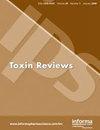Gallic acid and sesame oil exert cardioprotection via mitochondrial protection and antioxidant properties on Ketamine-Induced cardiotoxicity model in rats
IF 2.4
4区 医学
Q2 TOXICOLOGY
引用次数: 0
Abstract
Abstract Ketamine is a cardiotoxic agent and can deplete ATP in cardiomyocytes through mitochondrial dysfunction. We investigated the effects of gallic acid and sesame oil in ketamine-induced cardiotoxicity in rats. Male Wistar rats were randomly divided into six groups including control; ketamine; ketamine + gallic acid; ketamine + sesame oil; gallic acid and sesame oil. Serum cardiac marker, cardiac tissue oxidative stress markers, histopathological analysis and mitochondrial toxicity parameters (succinate dehydrogenase activity, mitochondrial swelling, reactive oxygen species (ROS) production and collapse of mitochondria membrane potential) were measured on the fifteen days of the study. The results showed that ketamine administration increased serum cardiac markers, oxidative stress parameters, histopathological alterations and mitochondrial dysfunction in cardiac tissue. Gallic acid and sesame oil administration in presence of ketamine was observed to decrease serum cardiac markers, oxidative stress parameters, histopathological alterations and mitochondrial dysfunction in cardiac tissue. The results suggest that gallic acid and sesame oil exert cardioprotection via mitochondrial protection, antioxidant properties and ultimately improving mitochondrial function and cardiac function.没食子酸和香油通过线粒体保护和抗氧化作用对氯胺酮致大鼠心脏毒性模型发挥心脏保护作用
氯胺酮是一种心脏毒性药物,可通过线粒体功能障碍消耗心肌细胞中的ATP。研究没食子酸和香油对氯胺酮致大鼠心脏毒性的影响。雄性Wistar大鼠随机分为6组:对照组;氯胺酮;氯胺酮+没食子酸;氯胺酮+香油;没食子酸和香油。在研究的第15天,测定血清心脏标志物、心脏组织氧化应激标志物、组织病理学分析和线粒体毒性参数(琥珀酸脱氢酶活性、线粒体肿胀、活性氧(ROS)产生和线粒体膜电位崩溃)。结果表明,氯胺酮增加了血清心脏标志物、氧化应激参数、组织病理学改变和心脏组织线粒体功能障碍。在氯胺酮存在的情况下,观察到没食子酸和芝麻油可降低血清心脏标志物、氧化应激参数、组织病理学改变和心脏组织线粒体功能障碍。结果表明,没食子酸和芝麻油通过线粒体保护、抗氧化作用发挥心脏保护作用,最终改善线粒体功能和心脏功能。
本文章由计算机程序翻译,如有差异,请以英文原文为准。
求助全文
约1分钟内获得全文
求助全文
来源期刊

Toxin Reviews
医学-毒理学
CiteScore
6.80
自引率
0.00%
发文量
36
审稿时长
>12 weeks
期刊介绍:
Toxin Reviews provides an international forum for publishing state-of-the-art reviews and guest-edited single topic special issues covering the multidisciplinary research in the area of toxins derived from animals, plants and microorganisms. Our aim is to publish reviews that are of broad interest and importance to the toxinology as well as other life science communities. Toxin Reviews aims to encourage scientists to highlight the contribution of toxins as research tools in deciphering molecular and cellular mechanisms, and as prototypes of therapeutic agents. Reviews should emphasize the role of toxins in enhancing our fundamental understanding of life sciences, protein chemistry, structural biology, pharmacology, clinical toxinology and evolution. Prominence will be given to reviews that propose new ideas or approaches and further the knowledge of toxinology.
 求助内容:
求助内容: 应助结果提醒方式:
应助结果提醒方式:


